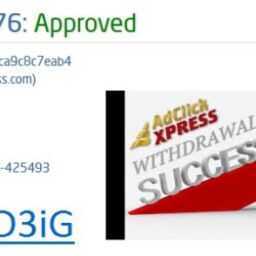The NIJ Standard 0101.06 is a comprehensive standard for testing the protective values of ballistic armor such as that used by law enforcement and military personnel. In order to qualify under this standard, ballistic armor must pass a series of rigorous performance tests to ensure that they live up to expectations.
Ballistic armor is rated by level of protection, with higher levels offering increasingly effective protection against penetration and blunt trauma impact from larger caliber rounds; in order to pass certification, a vest must prevent penetration by the test bullet at the test firing speed, and more importantly must prevent deformation as a result of blunt force trauma on the test surface. Soft armor (such as the concealable vests worn by law enforcement) consists of Level II-A, Level II, and Level III-A, and is meant to protect mostly against small arms fire. Hard body armor consists of rigid plates that can be inserted, and are rated Level III or Level IV, for protection against rifle rounds.
The important points of the NIJ standard can be explained by pointing out the changes in testing requirements from the 0101.06 standard and the interim NIJ 0101.05 standard; after reviewing tests of the previous standard, as well as performance in the field, the National Institute of Justice has determined that more strenuous testing requirements are needed to ensure a minimum lifespan of five years, and to protect against larger and faster bullets than in previous testing.
Under the NIJ 0101.05 standard, for IIA through IIIA testing, a total of six panel samples were required for testing purposes. Each panel was to be of a standard size, with six shots per panel and a minimum spacing between shots of 2 inches. Two shots (#4 and #5, specifically) were to be performed at a 30-degree angle from the armor, to test angled impacts. To test the effects of water on the material, armor was subjected to a six minute spray before testing. All test shots were performed on areas a minimum of 3 inches from any edge. Four tests of ballistic limit testing were performed to test its resistance to penetration; two tests of backface signature testing were performed to test for deformation of a test material (soft clay) behind an impact point, with a maximum allowable deformation depth of under 44 millimeters. Body armor would fail testing if it allowed greater deformations from the test bullets, or if the first test bullet completely penetrated the ballistic armor.
The NIJ 0101.06 standard provides more rigorous testing of these requirements. Specifically, 28 test samples are required – 22 large samples, and 6 small samples. Each panel still receives six test shots, but the spacing is more rigidly defined – shots one through three are spaced a minimum of two inches apart, with a minimum distance from edges of 2 inches. Shots 4 through 6 must be grouped in a circle with a max spread of 3.94 inches. Shot 4 is still tested at a 30 degree angle, but shot 5 is tested at a 45 degree angle. Wet testing is performed by completely immersing the armor for 30 minutes. Ballistic limit testing is performed on both the first and second rounds per type, with ten tests performed per type. Backface signature deformation testing requires three measured deformations of less than 44 millimeters, with a second measuring of any result over 40 millimeters, and one outlier permitted. Failure occurs if greater deformations are recorded, or if the armor is perforated by any portion of the projectiles tested.
The NIJ 0101.04 standard required that vests to be certified to level IIA withstand testing from a 9mm round traveling at a relative velocity of 1120 feet per second and a.40 caliber round traveling at 1055 fps. Level II armor had to withstand a 9 mm round at 1205 fps (+/-30) and a.357 magnum round traveling at 1430 fps. Level IIIA armor was required to stop a 9mm round at 1430 fps and a.44 magnum round at 1430 fps.
The NIJ 0101.06 standard increases requirements at all levels; armor to be rated level IIA must now withstand a 9mm round at 1225 fps, and a.40 caliber round at 1155 fps. Level II armor must now withstand a 9mm round at 1305 fps, as well as a.357 magnum at 1430 fps. Level IIIA armor must now be able to withstand a.357 SIG round at 1470 fps, as well as a.44 magnum at 1430 fps. These tests must all be performed according to the requirements listed above.
In addition, NIJ Standard 0101.06 tests for the effects of environmental conditioning from water, long-term use, and temperature exposure. These tests put one batch of eight panels (six large and two small) into a rotary tumbler set at 149 degrees Fahrenheit with 80% relative humidity. This batch is cycled for 72,000 cycles at five revolutions per minute over a period of roughly ten days, then removed and tested against both threat calibers at a reduced test velocity (Level IIA requires testing of 9mm rounds at 1165 fps and.40 caliber rounds at 1065 fps after conditioning; Level II requires testing of 9mm rounds at 1245 fps and.357 magnum rounds after conditioning; Level IIIA requires testing of.357 SIG rounds at 1410 fps and.44 magnum rounds at 1340 fps after conditioning.)
The level of protection one wears is typically based on one’s need for concealability, comfort, and overall protection. Level II-A is the thinnest and lightest armor available, and stops penetration from a majority of threats, but is less effective against blunt trauma injury. Level II armor provides a balance between blunt trauma protection against high-velocity rounds, cost, and thickness while remaining concealable. Level III-A armor provides the best protection in soft armor and minimizes blunt trauma injury to the wearer, allowing them to respond more quickly to imminent threats, but is less concealable, heavier, and more expensive.
AUTOPOST by BEDEWY VISIT GAHZLY



